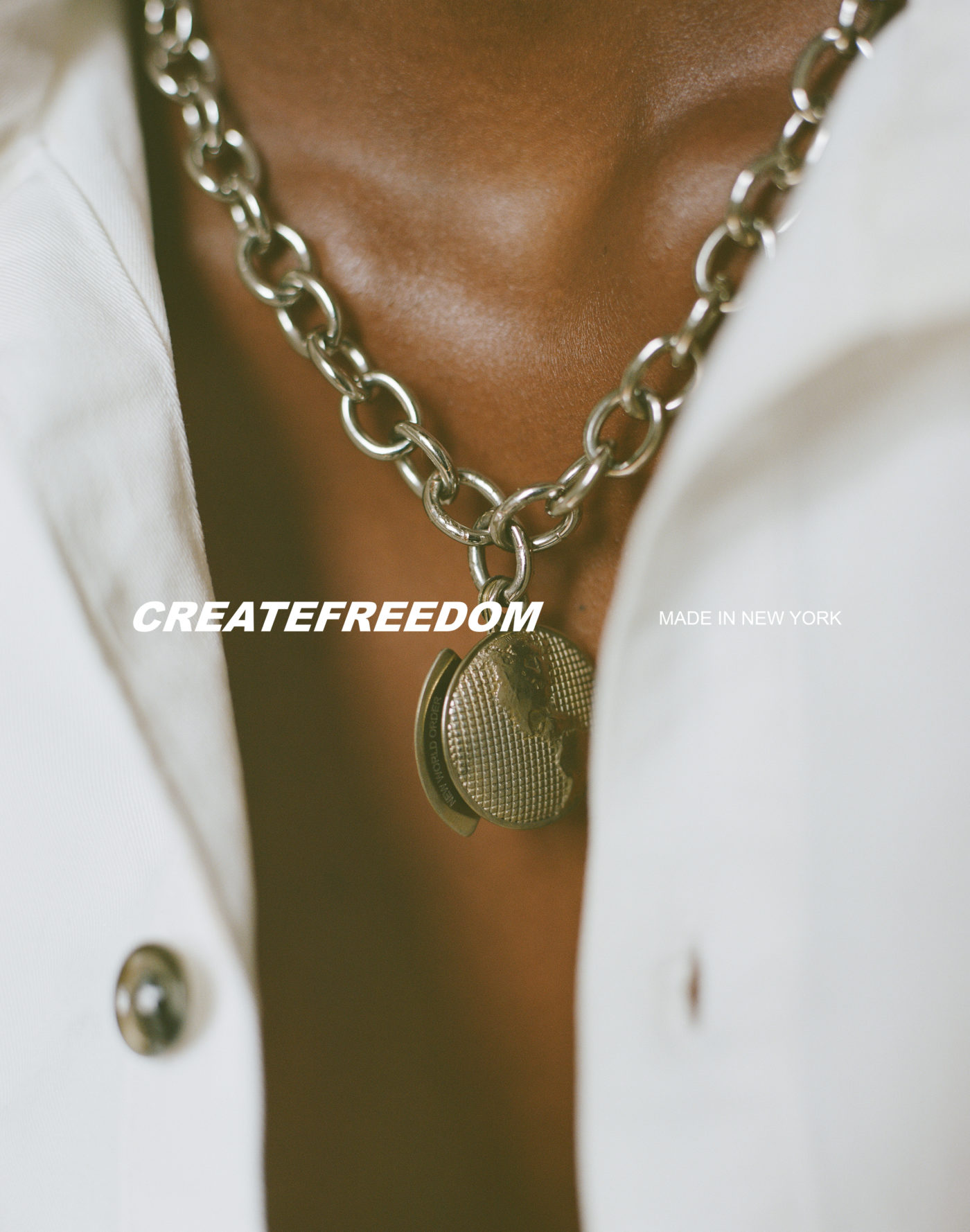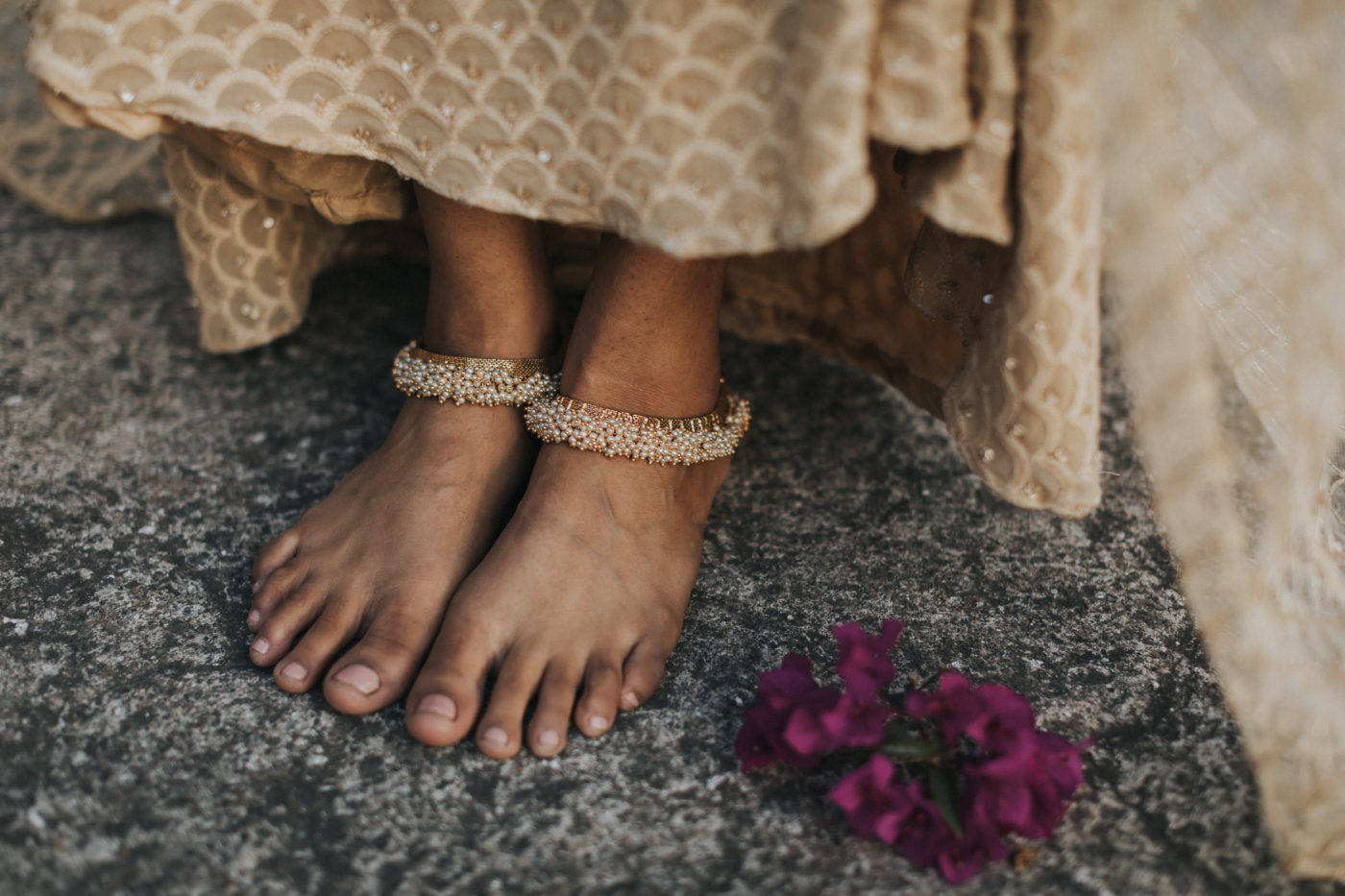One of our primary goals on Future Heirloom is to uplift emerging makers who are transforming the jewelry world and making lasting impacts on our community. Today, we’re kicking off our newest series of interviews with the talented innovators in our One For The Future program: recent graduates, self-starters, and emerging professionals who embody passion, dedication, and a commitment to jewelry. We’re excited to debut this series with Jevon Smith (he/him) and Max Thompson (he/him), the talent behind the New York-based brand CREATEFREEDOM.

But before we jump in to ask Jevon and Max a few questions, here’s a bit more about CREATEFREEDOM:
CREATEFREEDOM serves to explore how freedom exists and how it can be expressed through the individual, the community, and strong interpersonal connections. Each piece that is designed embodies a characteristic of freedom and is constructed to maintain wearability. The debut collection, which was launched on January 9th 2021, covers five broad concepts of freedom: legacy, growth, unity, change, and family. CREATEFREEDOM celebrates the non-conforming wearer while providing an enduring design aesthetic.

Future Heirloom: Tell us, why jewelry?
CREATEFREEDOM: Jevon has always created his own accessories since a young age and went on to study accessory design at the Fashion Institute of Technology. What brought us to focus on jewelry specifically is both its aspects of wearability and longevity. People who wear jewelry do so on a daily basis and tend to stick to their core pieces which becomes a part of their identity. It’s important that the jewelry they do wear is something that they can identify with, and our brand’s meaning, which is incorporated in the name of each ring and its design, is something people want to represent.


FH: What does the Power of Jewelry mean to you?
CF: In our generation, many of us are now starting to recognize jewelry more for its spiritual and healing properties rather than it being a symbol for wealth and status. Each form of precious metal contains a unique set of metaphysical properties that activate different energies. As we are beginning to value these aspects of jewelry, it has the power to become an extension of ourselves; past, present, and future versions. It serves an extension by reminding us what we are healing from in the past, our values in the present, and what we are working towards developing in the future. Jewelry serves as a personal symbol of what we represent and an affirmation of what we are becoming.



FH: How would you describe your work, in 5 words or less?
CF: Minimal, but intentional statement pieces.
FH: What’s something unusual about your practice that you’d like to share with readers?
CF: What is unusual from our practice is that both of us do not come from a typical jewelry background. Jevon studied Accessory Design, but specialized in footwear and handbags, while Max studied Mathematics and Finance. In general, our life has been about breaking norms and identifying new ways of approaching things since we both did not grow up grounded in, or attached to, certain traditions or cultures. This has translated into our design process and the overall meaning of our brand. It allows us to provide a fresh perspective to the jewelry industry by redefining a new standard of what is acceptable, and creating unique statement pieces for the non-conformist.


FH: How does community play a role in your work?
CF: Community actually plays a big role in our overall process. We have spent a lot of time speaking with the people that have resonated with our brand over social media and in real life. We want to develop a community that recognizes that we are more than a jewelry brand, but a brand that connects with and advocates for them. A lot of our messaging, as well as coming from our own experiences, comes from the conversations we have had within our community. Part of our core values is to provide opportunity to those who have been marginalized and even though we have just started, we have already incorporated it into our process. While we wish to do more going forward, we have already donated some of our proceeds to an organization that assists BIPOC creatives, have talked on panels about Black-owned businesses, and have enrolled in mentorship programs to help creatives.


FH: What stories are you telling in your work?
CF: CREATEFREEDOM means to destroy and rebuild the narrative society has constructed about what you are and what you should be. Creating a space where you can exist as you are. We think of our brand as an ongoing thesis on how to dismantle barriers and limitations society has imposed. Our first collection touched on five components: legacy, growth, unity, change, and family. While we began by releasing five rings to serve as a foundation, we branched out to earrings and a necklace which repurposed the philosophy and designs from our initial five rings.
For example, our latest piece, the New World Order Necklace, centers around this idea of change. The idea for our campaign around this new addition was called “VISIONS OF THE NEW WORLD”, and it was focused on reimagining images from both luxury ads and R&B from the late 90s/early 2000s. Hindsight is a powerful tool that we possess because it allows us to revisit the past, learn from it, and make changes in the future that contribute to our growth as a society.

CREATEFREEDOM’s newest campaign, VISIONS OF THE NEW WORLD, launched on September 13th. The campaign reimagines what the new world could look like and draws inspiration from luxury ads and R&B images from the late 90s and early 2000s.
You can follow CREATEFREEDOM on Instagram @CREATEFREEDOMNYC, and see more their work on their website, createfreedomnyc.com
Thanks to Jevon Smith and Max Thompson of CREATEFREEDOM for sharing more about their brand and practice with us. Images provided by CREATEFREEDOM. Interview compiled by Andrea Rosales-Balcarcel and edited by Jackie Andrews.


































































